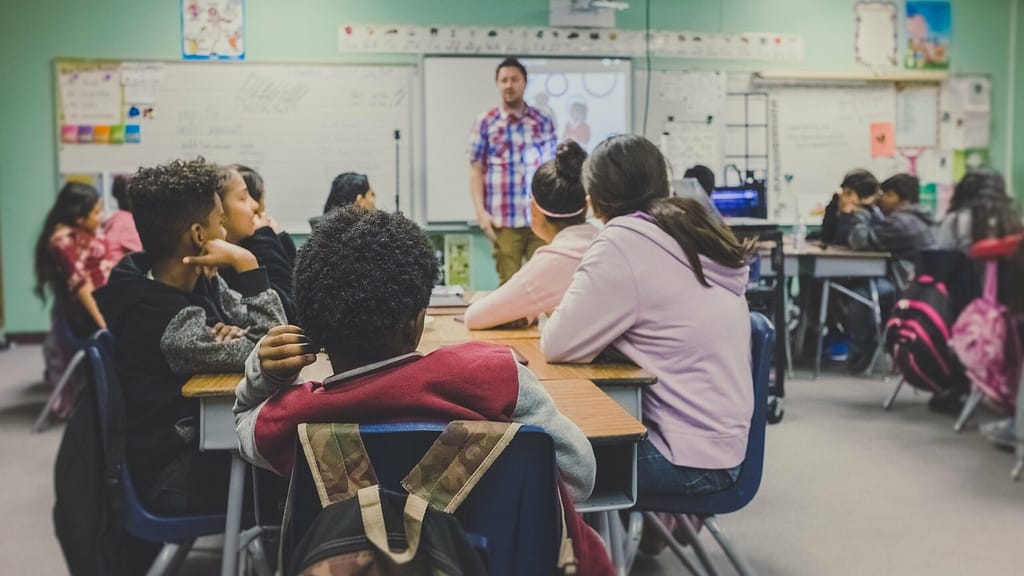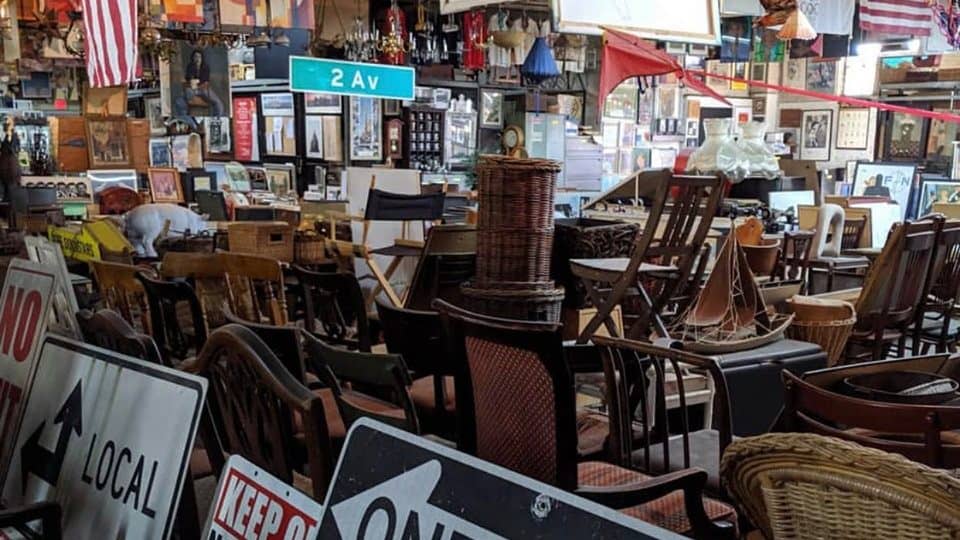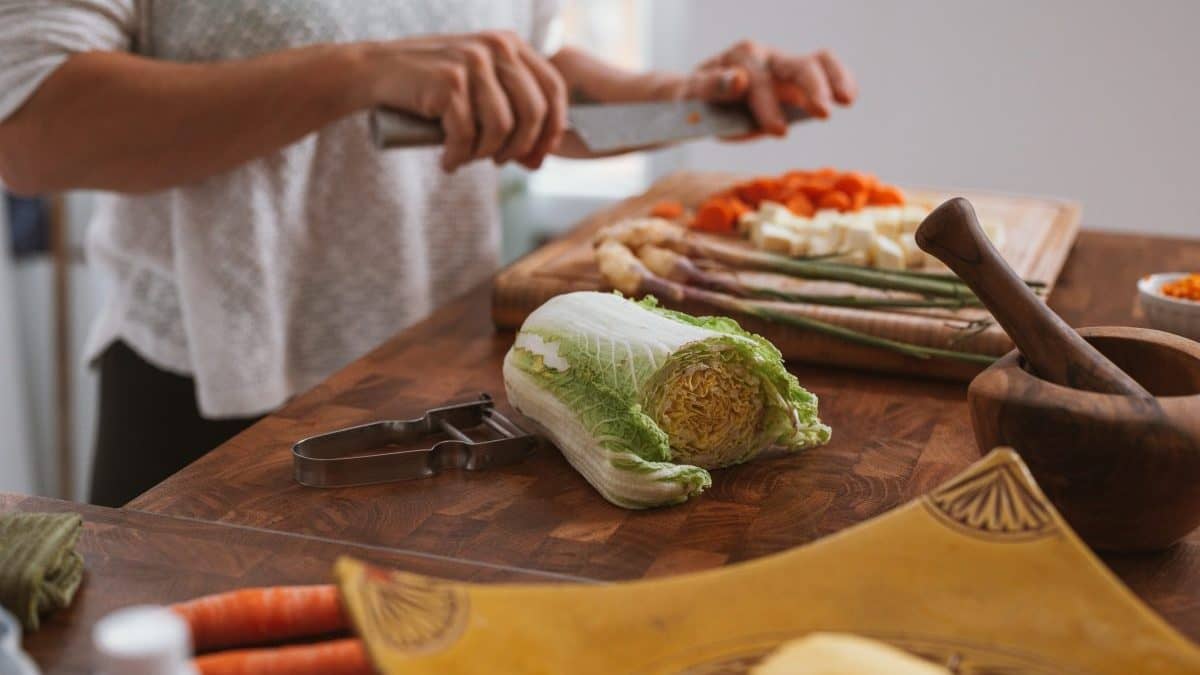Let’s take a trip back in time. I want you to close your eyes and picture your middle school lunchroom. The noise, the lines, maybe that tinge of anxiety about where to sit, craning your neck to see what’s for lunch, remembering–with joy–it’s Friday mozzarella sticks. I can still picture every detail of my middle school lunchroom, but there was always one great mystery: the kitchen.
Catching glimpses of it as those big, metal trays of food came in and out, I understood there was a complex, well orchestrated, circus of activity behind those doors. But I had no idea of knowing just how incredible all of this was. Moreover, I had zero appreciation for the people who made it all happen.
Looking back, the most overlooked staff in the entire school were the people that cooked and served lunch to hundreds of kids a day.
I think it’s time we take a minute to thank those cafeteria workers and to get a glimpse into their world. To celebrate what they do, who they feed, and why they really are superheroes.

You Can’t Teach Hungry Kids
When you think about the foundations of learning, you often think about those tried and true basics of reading, writing, and arithmetic, but there is a more fundamental part to learning: food. Studies have shown that kids from homes that face food insecurity are more likely to experience developmental impairments in language, motor skills, and behavior; are more likely to have to repeat grades 1; and are more likely to suffer from a variety of behavioral issues that disrupt their education. 2
Even more alarming, the USDA estimates over 9 million children in America are food insecure, meaning they lack “consistent access to enough food for every person in a household to live an active, healthy life” 3. That means that about one in seven kids rely on meals at school as their major source of nutrition. 4
In short, education runs on fed kids.
The Busiest Kitchens in America
With the importance of school meals well established, it’s time to really put into perspective the massive scale of the average school lunch room. The average fast food restaurant in the US serves about 300 people per day. 5, in many cases, serving up breakfast, lunch, and snacks. Not to mention, schools are serving up food that doesn’t just have to make it through a crowd of kid critics, it also has to follow very strict nutritional and dietary guidelines.
Needless to say, feeding an entire school of kids is a logistical, essential, often underappreciated art form. From drawing up menus to sourcing food, preparing it all to serving on strict timelines, cafeteria workers deserve our greatest thanks.
Lunchtime at America’s Largest Middle School
I.S. 61 Leonardo Da Vinci in Queens, New York is the largest middle school in America with over 2,100 students in grades six through eight. 6 It is one of 1,800 public schools in New York City’s public school system that, together, serve over one million kids. Like clockwork, every school day, students at I.S. 61 make their way through the cafeteria served up under the caring eye of lunch cook Ruth Quizhpe.
As you’ll see in the incredible video from NYT Cooking below, Ruth isn’t just a master at her craft. She is a loving and essential part of every student’s life, whether they realize it or not. Her day starts at 6:45 am, checking in as breakfast gets prepared, and from there, things begin to ramp up. She skillfully leads her team through prepping veggies, mozzarella sticks, sandwiches, and sides getting ready for the main event. By 10:20 the first wave of 450 students makes their way through the cafeteria. This pandemonium continues, back-to-back for 5 more lunch periods until the entire school is fed. 7
Sure, there are mixed reviews, but for many of the students this cafeteria serves up the only reliable meals they will have that day—a fact that Ruth is acutely aware of.
NYT Cooking did an incredible profile of Ruth and her work in a video hosted by food reporter and author Priya Krishna. It’s one thing to read any of this about Ruth, but it’s another to watch the master. Take a watch:
Absolutely incredible, right? This video is part of a larger series hosted by Priya Krishna called On the Job that takes a look at NYC’s world of food culture from a different perspective, meeting the people that really make it happen. It’s a wonderful series you can watch in its entirety over on the NYT Cooking YouTube channel. There, you’ll also find great videos with recipes that have become a part of my go-to meals—really, I make this heet pan bibimbap from Eric Kim at least every other week.
“I feel this is the best job there is.”
-Ruth Quizhpe
Serving Students, Serving Communities
In the video, Priya and Ruth talk briefly about Ruth’s work during the COVID-19 pandemic to keep feeding the community. After schools closed in March of 2020 under the threat of the pandemic, the New York City Department of Education (NYCDOE)—which feeds more people daily than any other public institution in the United States—decided to keep providing meals to students and expand their outreach to communities as well. When the program began in February of 2021, the NYCDOE served about 90 million meals. 9 Schools became pickup points for grab-and-go meals to serve students and their families.
Both during this time, before, and after, lunch cooks like Ruth Quizhpe and her team became integral parts of feeding their communities. Some days, she and her 10 person staff were serving up 4000 breakfasts and 4000 lunches with lines around the block. 10 In March of 2022, Ruth and 31 other school workers were honored as “Hunger Heroes” by the New York City Department of Education and No Kid Hungry New York for their work in going above and beyond to provide healthy meals for kids, particularly for their hard work feeding communities during the height of COVID-19.
As New York City Mayor Eric Adams said, “The real heroes don’t wear capes – they wear aprons and gloves” 11
Bringing Overdue Thanks to the Work of our Cafeteria Workers
Like many people, I wasn’t aware of the incredible efforts schools and in particular cafeteria workers were making during the pandemic to keep students and communities fed. And hunger relief efforts spearheaded by school systems weren’t just limited to NYC. Across the country, schools, buses, and bus stops became a means for feeding communities as food insecurity rates in households with children reached almost 30% by the summer of 2020. 12 Some programs even partnered with local farms and nonprofit organizations to expand pickup locations and access to fresh food. 13 Our thanks to those that fed students during the pandemic and continue to keep kids fed is long, long overdue.
Continuing to Feed Kids and Communities
As students have returned to school, many programs that provided community support to feed kids and families have expired, making it more difficult for schools alone to support communities in their hunger relief efforts. But it’s not all bad news—the community action that made feeding communities during the pandemic possible has shown us that partnerships and policy innovations can make a difference in making sure that no kids go hungry in the United States.
If we’ve sparked some excitement in you to start donating or volunteering to reduce hunger in your community, please check out No Kid Hungry, an organization that works to help communities feed children. They work across the country to provide grants, work directly with schools, advocate for better policy, and spread awareness to make sure kids don’t go hungry.
You can also check out and support the work of Feeding America, another great organization that works more on the community level to end food insecurity. They work with food banks and pantries, as well as local food programs to help those facing hunger. In addition, Feeding America also works to advocate for better policies to end hunger through long-term solutions. Both are great, nationwide organizations to start with, if you are inspired to help support the work schools are already doing to reduce hunger in communities.
Lastly, if you’re interested in learning more about this or making a difference in your own community or state, I encourage you to take a look at this great piece Published in Health Affairs that lays out some of the ways we can take the lessons learned during the pandemic to create lasting, positive change.
Bringing it Back to the Cafeteria
All of this comes back to those school lunch rooms. The drama, the intrigue, sometimes the joy…chocolate milk just tastes better out of a carton. For better or worse, the lunch room was a place where you got to learn a lot about your classmates, who the kind ones were, who the mean ones were, those that struggled at home. Maybe at the time, the significance of it didn’t sink in, but those lunchrooms were as educational as any classroom.
While working on this article I brought up the school lunchroom to people I ran into, I asked them about the lunch cooks and cafeteria workers they remember. I heard stories of “lunch ladies” realizing that kids were coming to school hungry back in the 60s and 70s and making sure they got a little extra on their trays; kind cafeteria staff who let it slide that you had lost your lunch tokens and made sure you had enough to eat; lunch workers who recognized when kids were being bullied and stepped in; cafeteria monitors that weren’t afraid to step into the meanest fights and knew exactly who instigated them; serving staff that gave people a smile during their most difficult moments growing up that made them feel seen.
The world is full of heroes that don’t get recognized nearly enough. They make life work for all of us, and they deserve our sincerest thanks and our utmost support. Our world is better thanks to the Ruths all around us.
Stay beautiful & keep laughing!
-Liesl

Don’t miss out on a single article!
Enjoy unlimited access to over 500 articles & podcast that give you a positive perspective on the state of the world and show you practical ways you can help.
Notes:
- https://www.feedingamerica.org/hunger-blog/help-kids-facing-hunger-this ↩
- https://www.iowafba.org/impacts-hunger-education ↩
- https://www.feedingamerica.org/hunger-in-america/food-insecurity ↩
- https://www.census.gov/newsroom/press-releases/2019/school-enrollment.html#:~:text=3%2C%202019%20%E2%80%94%20The%20number%20of,population%20age%203%20and%20older. ↩
- https://www.foxbusiness.com/markets/9-fast-food-stats-that-will-blow-your-mind[/ref] Meanwhile, the average public school in the united states serves 546 students daily 14https://nces.ed.gov/pubs2011/pesschools09/tables/table_05.asp#f3 ↩
- https://www.usnews.com/education/k12/new-york/is-61-leonardo-da-vinci-264185#:~:text=Is%2061%20Leonardo%20Da%20Vinci%20is%20a%20public%20school%20located,the%20school%20serves%206%2D8. ↩
- https://www.youtube.com/watch?v=uPMgVXyK_BQ ↩
- https://www.youtube.com/watch?v=uPMgVXyK_BQ ↩
- https://civileats.com/2021/03/18/what-new-york-city-schools-learned-feeding-millions-during-the-pandemic/ ↩
- https://www.youtube.com/watch?v=uPMgVXyK_BQ ↩
- https://www.nyc.gov/office-of-the-mayor/news/118-22/mayor-adams-chancellor-banks-no-kid-hungry-recognize-this-year-s-nyc-hunger-heroes-#/0 ↩
- https://www.healthaffairs.org/do/10.1377/forefront.20220614.801199 ↩
- https://www.nycfoodpolicy.org/innovations-in-school-food-during-covid-19/ ↩








